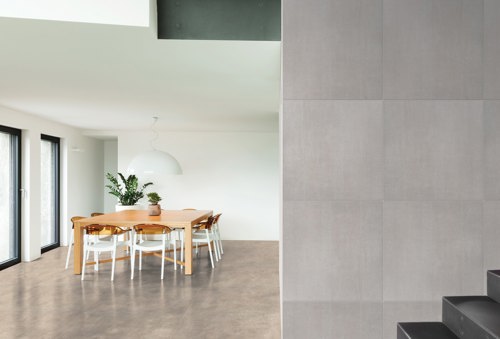Tiles
Tiles make a great choice when it comes to covering your walls and floors – they’re stylish, durable and in general, pretty easy to maintain and clean.

Tiles
Tiles make a great choice when it comes to covering your walls and floors – they’re stylish, durable and in general, pretty easy to maintain and clean.
Tiles explained
Ceramic tiles on the other hand is less dense and has a higher water absorption rate. This means that it is not frost-proof, and it may chip or damage more easily than porcelain tile. Despite these differences, ceramic tile is a very popular choice for floors, counter-tops and walls. The tile is coated with a special glaze that protects and seals it.
Mosaics consist of small pieces of tile arranged on a sheet. When laid and grouted, this gives the impression of thousands of tiny tiles – or tesserae, to give their formal name. Mosaics can be made from any number of materials such as porcelain, glass, marble, stone, ceramic and even pebbles and come in a variety of shapes.
Mosaics are a great way to add detail to your room, so you’ll often find them laid in ‘bands’ or as a feature wall. Because of their small size, you’ll have lots of grout joints – this means mosaics are a great idea for adding extra grip where needed. For example, many people use mosaics in wet room showers or patios – proof that you don’t need to sacrifice form for function!
Tiles for your home:
Do you want to tile a splashback? Floor? Countertop? Or perhaps walls? Knowing where the tile will be placed helps you decide whether it should be porcelain or ceramic.
When it comes to flooring, porcelain tiles are your best bet. They’re hardwearing, have no-slip grip and incredible strength. They’re also water-resistant which makes them a no-brainer for bathroom installations or outside use. Plus, porcelain tiles can be manufactured to imitate the look of natural materials, such as timber and stone, so they are increasingly used as an affordable alternative to the genuine thing.
Ceramic tiles are generally cheaper than porcelain making them a great option for larger surface areas like bathroom walls. As they’re also glazed, colours can be more diverse and vibrant, allowing you to create a striking feature wall, splashback or counter top.
As a general rule of thumb, choose tiles relative to the size of the room. So, a large space like a living room can handle large format tiles such as 600 mm x 600mm. While a small, powder room generally looks best with a smaller style like 300m x 300m. Also keep in mind that wall tiles should never be larger than their complimentary floor tile as this upsets the proportional look of a room.
Colour plays a really important role in tile selection. Light coloured or neutral tiles will make a space appear larger and are a great option for a guest bathroom or narrow hallway. While dark colour tiles can be a striking addition to a kitchen or open floor plan where there is plenty of light.
When thinking about colour, also consider your grout lines as they make a big impact on the final result and whether a space looks smaller or larger. The more grout lines you have, the busier your wall or floor will look and this may have a tendency to make a small space look even smaller. To create a seamless look and minimise the appearance of a ‘grid’, ensure your grout colour is similar to the colour of the tiles you choose.
Tiles are available at selected Choices Flooring stores, so please check your local Choices Flooring store for more information.
